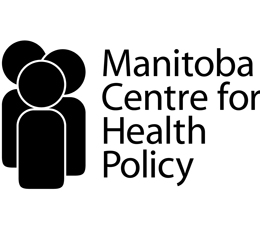Manitoba Report Shows That BMI Is Neither A Good Measure Of Health Nor Of Healthcare Costs
Wednesday, October 26, 2011 Earlier this week, the Manitoba Centre for Health Policy (MCHP) released a report on Adult Obesity in Manitoba: Prevalence, Associations, and Outcomes.
Earlier this week, the Manitoba Centre for Health Policy (MCHP) released a report on Adult Obesity in Manitoba: Prevalence, Associations, and Outcomes.
The document (and especially the summary) makes an interesting read as it describes the rather complex nature of the epidemic and its impact on Manitobans.
While the analysis of about 35,000 Manitoba adults over the age of 18 who took part in one of three surveys between 1989 and 2008, documents the high prevalence of obesity and the fact that many health conditions are indeed more common in people with higher BMI’s, it also shows that these findings do not readily translate into higher healthcare costs till about a BMI of 33.
Thus, as the report summarizes:
“The Obese group almost always used more healthcare services than the other groups. However, the differences were small and often did not come into play until the very highest BMIs….people in the Obese group visited doctors more often than others. However, they only visited about 15% more overall. As well, the rise in visits only occurred from a BMI of 35 for men and 32 for women.
Likewise, costs of prescription drugs went up quite slowly until very high BMIs were reached. Hospitalizations were higher for those in the Obese group, but only for BMIs at or above 33. Home care use did not differ much either.”
This finding is actually not that surprising or unexpected.
Regular readers will by now be quite familiar with the Edmonton Obesity Staging System (EOSS), which was developed exactly because BMI is such an inadequate measure of risk or health.
Thus, I am confident that applying EOSS to this analysis would produce substantially different results than simply looking at BMI.
Thus, for e.g. our recently published analyses show that about 50% of people in the overweight category actually rank as EOSS 2/3. These individuals would considerably amplify the costs of people within the BMI 25-30 range – probably to the same level as EOSS 2/3 in the Obesity categories, while the obese EOSS 0/1 folks (of which there are about 20% in the BMI 30-35 class) would have costs very much like those of the EOSS 0/1 overweight people.
Such overlap in EOSS stages across BMI levels would readily mask any relationship between BMI and healthcare costs till rather extreme levels of BMI, where very few people will remain with EOSS 0/1 and the costs of being EOSS 2/3/4 would be substantially higher.
Thus, the ability of BMI to explore and interpret the cost of ‘obesity’ is limited, as it misses all of the ‘excess-weight-related’ health problems in the Overweight group while diluting the health care costs in the Obese group due to a substantial number of obese EOSS 0/1 people found in the moderately Obese group.
Thus, although I agree with the findings that higher health-care costs are only identifiable in individuals with moderate to severe obesity, I also sense that this report substantially underestimates the true cost of ‘excess-weight-related’ health problems.
The report also looked at ‘risk factors’ for obesity – a topic that I will comment on in tomorrow’s post.
A Summary of the Report is available here
The Complete Report is available here
AMS
Edmonton, Alberta


